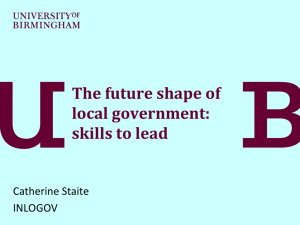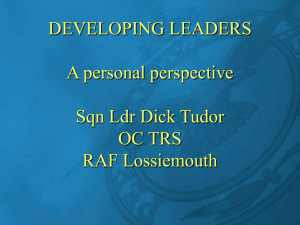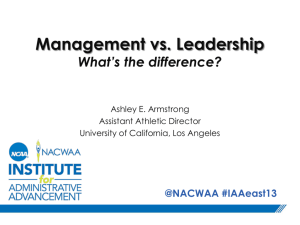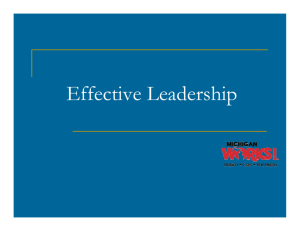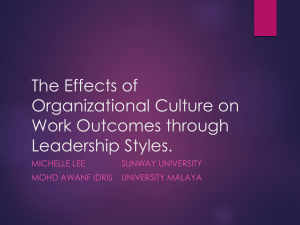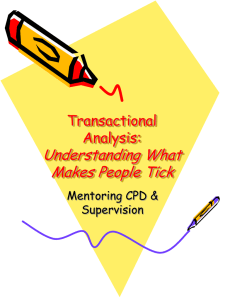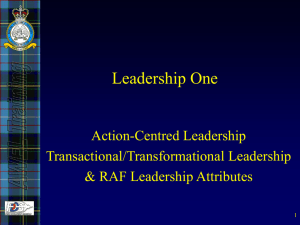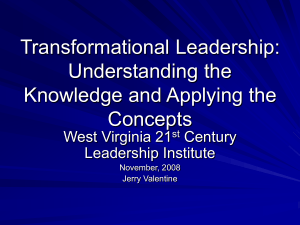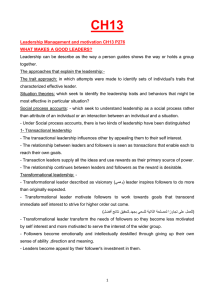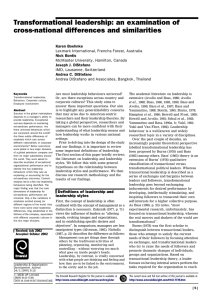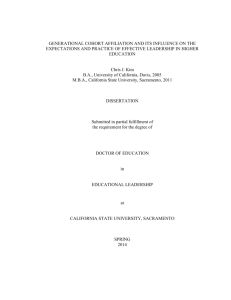Leadership
advertisement
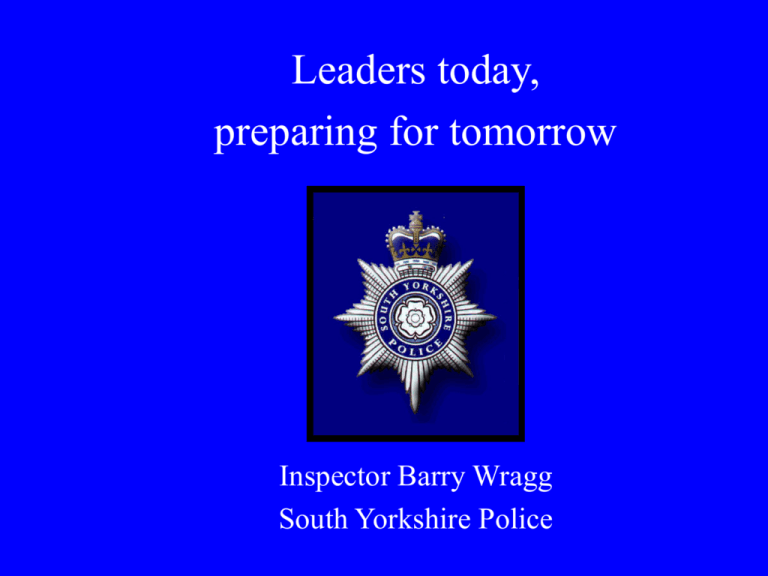
Leaders today, preparing for tomorrow Inspector Barry Wragg South Yorkshire Police Leadership isn't in isolation. – Sources of Power and Authority: – Command - which is the position you are placed in. – Leadership - in which your source of authority is personal – Management- which is all about your resources and the 3 Es Challenge L C M The British Government • An acknowledgement from the Home Office that previous leadership courses were good at command and control but no emphasis on facilitative leadership that is vital for today’s partnership working. • Greater emphasis should now be given to transformational leadership • Two Home Office Reports– Getting the best leaders to take on the most demanding challenges - talent pool not being developed or maintained. – Police Leadership, Expectations and Impact - training alone will not be sufficient to deliver appropriate leadership. It needs clear statements about what kind of leadership is expected and these statements need to be effectively enforced if real improvements in leadership standards are to be achieved. Clear statements of expectations cannot guarantee better leadership, however, unless they are effectively embedded in the functioning of selection, appraisal and development systems, and this will not be a simple task. Transactional &Transformational • • • Transactional Relies on human relations to lubricate human interactions Fulfils role expectations by striving to work effectively within current systems Supports structures and systems that maximise efficiency and performance • • • Transformational Releases human potential – identifying and developing new talent Designs and redesigns jobs to make them meaningful and challenging Aligns internal structures and systems to reinforce overarching values and goals Transformational + Transactional = Situational RELATIONSHIP BETWEEN LEADERSHIP AND MANAGEMENT BEHAVIOURS & STYLES TRANSFORMATIONAL LEADERSHIP Inspiration Empowerment Personal strength and sensitivity Recognition and support Team building Articulate vision and values TRANSACTIONAL LEADERSHIP Innovate and Challenge Example Planning Analysis Training Monitoring Evaluation Organisation Control MANAGEMENT Acknowledgements to the RAF Facilitative Organisations need the type of leader who works from a set of core values consistent with the concepts of empowerment, commitment, collaboration, learning, and partnership. Facilitative • Empowerment - means your staff understand your intentions, but crucially.. • They have the ability to undertake actions without always waiting for your approval. • Ever worked in an office where you have to wait for the boss to return and give approval before you can undertake a vital (or even routine) change? • Are Leaders restricting your abilities??? I’m not sure let me check with my manager and get back to you or I’m sure that will be OK I’ll just have to check with my manager first though or Yes that’s will be OK We can do that for you Communication & Empowerment 200 years since the death of Admiral Nelson at the Battle of Trafalgar Leadership isn't in isolation. – Sources of Power and Authority: – Command - which is the position you are placed in. – Leadership - in which your source of authority is personal – Management- which is all about your resources and the 3 Es Challenge L C M Leadership isn't in isolation. – Sources of Power and Authority: – Command - which is the position you are placed in. – Leadership - in which your source of authority is personal – Management- which is all about your resources and the 3 Es Challenge L C M The well-equipped leader: able to manage a substantial challenge in consequence of having solid sources of authority in each of the three domains of command, management and leadership. Interesting Leadership Quotes • Commanders are not leaders until their position has been ratified in the hearts and minds of those they command • Those who need a rank don’t deserve it, and those who deserve a rank probably don’t need it. RELATIONSHIP BETWEEN LEADERSHIP AND MANAGEMENT BEHAVIOURS & STYLES TRANSFORMATIONAL LEADERSHIP Inspiration Empowerment Personal strength and sensitivity Recognition and support Team building Articulate vision and values TRANSACTIONAL LEADERSHIP Innovate and Challenge Example Planning Analysis Training Monitoring Evaluation Organisation Control MANAGEMENT Acknowledgements to the RAF RELATIONSHIP BETWEEN LEADERSHIP AND MANAGEMENT BEHAVIOURS & STYLES TRANSFORMATIONAL LEADERSHIP Inspiration Empowerment Personal strength and sensitivity Recognition and support Team building Articulate vision and values TRANSACTIONAL LEADERSHIP Innovate and Challenge Example Planning Analysis Training Monitoring Evaluation Organisation Control MANAGEMENT Acknowledgements to the RAF Case Study Chief Constable issues ‘Statement of Purpose and Values.’ “How much communication does it take?” Leading People Through Change Denial Sabotage Exploitation Acceptance Leaders and Change • STAGE ONE -COMMITMENT FROM THE TOP – This must be genuine and sincere. Everyone in the organisation should be able to see and feel this commitment. There must be genuine belief that there is the need for this. If the three steps above are not present from the start, then there is no possibility of success. • STAGE TWO - CREATE THE ENVIRONMENT – Ensure you have a management structure capable of supporting its staff. Fully brief management as to your intentions. Develop an open and honest relationship with your staff • STAGE THREE - UNDERSTANDING THE THEORY – Listen to presentations and then prepare your own. Keep it simple, start small with a success. Set standards and expect them of others Leaders and Change (Part 2) • STAGE FOUR - EDUCATE FOR CONTINUOUS IMPROVEMENT – Remember that management have only been briefed and will not fully understand the concept. They require training in Culture/Concepts/Tools/Techniques. Here they can identify problems, state their aims to overcome them and jointly commit themselves. • STAGE FIVE - MISSION STATEMENT – The support systems are now in place. Management now understand why the action is being undertaken. The staff can see the commitment from the top • STAGE SIX - STEERING COMMITTEE – Progress the actions for improvement. Don’t try to do too much in the early stages. Keep it SIMPLE. Simple is cheap, simple is flexible, simple is visible. Leaders and Change (part 3) • STAGE SEVEN - EDUCATE THE STAFF – Create staff ownership of the process. Give them the same training that management received, to ensure development in continuous improvement. • AIM FOR CONTINUOUS IMPROVEMENT THROUGH PEOPLE. REMEMBER THE BIGGEST FAILING IS THE INABILITY TO GET THE BEST OUT OF PEOPLE Leaders today, preparing for tomorrow. Inspector Barry Wragg South Yorkshire Police

